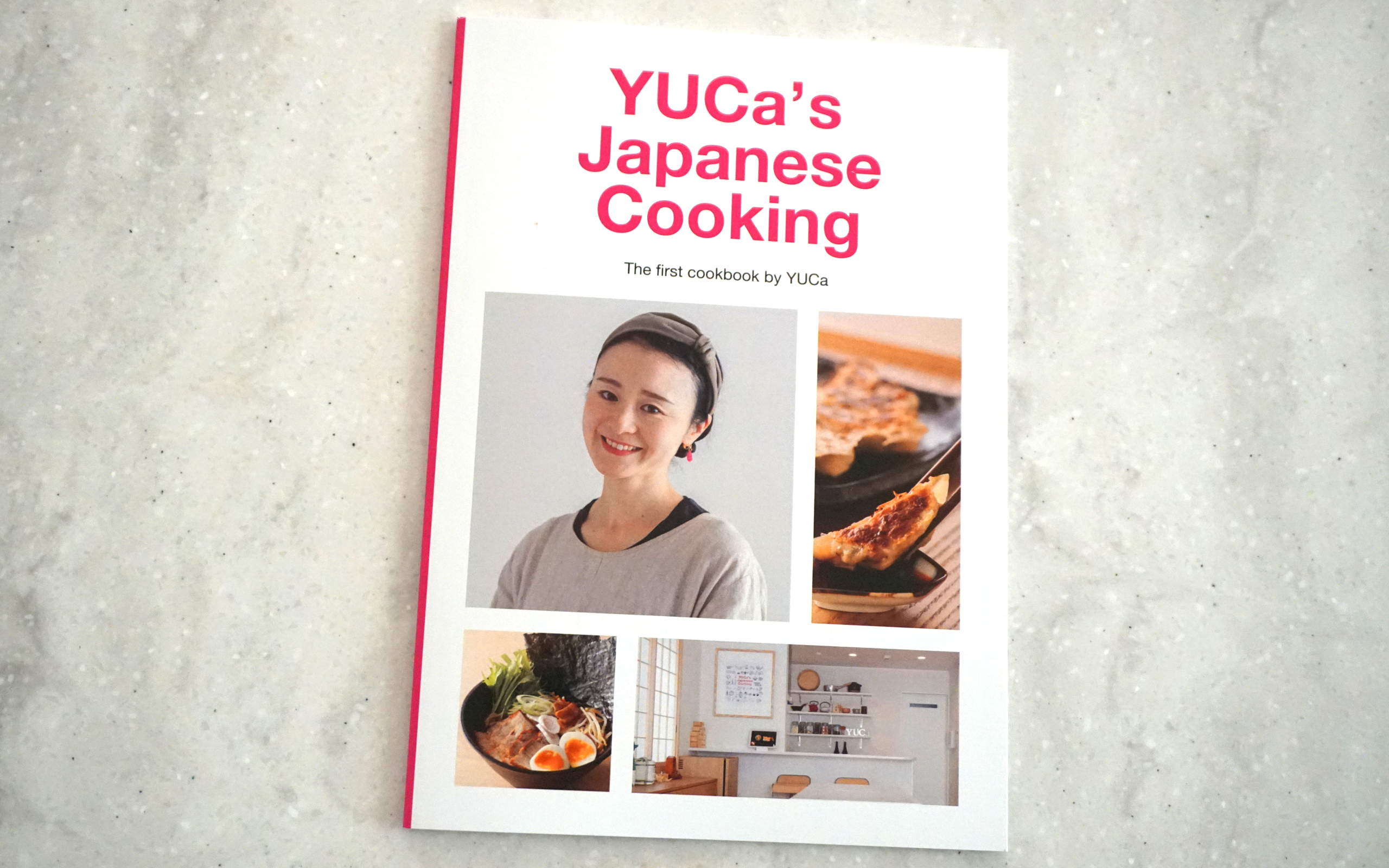Latest Posts
What is Umami?
Umami is the fifth category of taste and is not as commonly known as the other four (sweet, salty, sour and bitter).
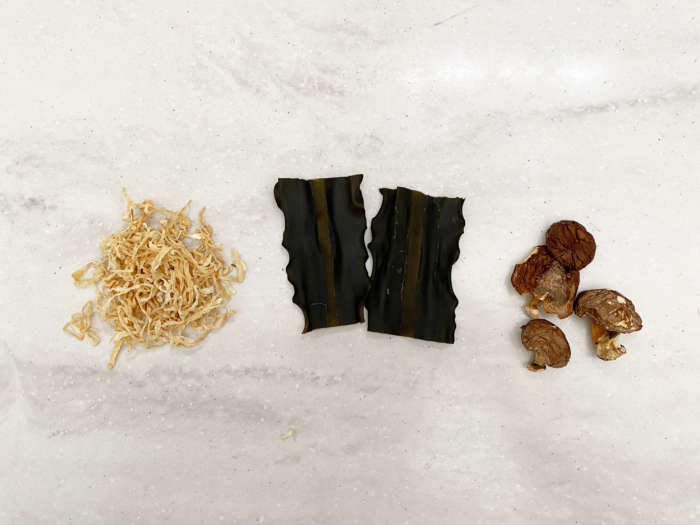
Umami is a concept with which all Japanese people are familiar – the Japanese palate easily recognizes its rich mouth-feel. The Kanji characters for umami translate as “delicious flavor” (旨味). When something taste good, it is often said to be Oishii (美味しい), but it can also be called Umai (旨い), and shares the Japanese character for umami.
Umami can be described as savory; it is full, rich, and round on the palate. It naturally exists in many foods including Parmesan cheese, meat, mushrooms, seaweed and tomatoes.
In 1908, Professor Kikunae Ikeda identified umami while sampling his wife’s is tofu simmered in a kelp broth and later isolated glutamate, inosinate, and guanylate, the naturally occurring amino acids and nucleotides that are the common components in umami-rich foods. Professor Ikeda also developed the flavor enhancer monosodium glutamate.
Many Japanese ingredients are rich in natural umami, including some of the main players in the Japanese pantry; soy sauce, mirin, miso and sake. Food is richer in Umami when fried that when fresh: shiitake, scallops, and daikon, for example.
* Reference of this article : Food Sake Tokyo (The Terroir Guides)
Edible Wild Plants for Japanese Cooking
In spring, edible wild plants called “Sansai” (山菜) appear in supermarkets. Sansai are considered very precious because they can be picked in mountains or fields for a short period of time, only a few weeks.
It is said that there are more than 200 varieties of Sansai, including sprouts, greens, and small, tender young grasses.
Although some Sansai have a bitter taste, they are used in a variety of dishes such as soba noodles, cooked rice, branched vegetables, and salads.
Tempura is a must for those who enjoy the taste of Sansai. When I was a child, my grandparents who lived in the countryside would send us wild vegetables from the mountains when it was time to harvest them. I still remember how my father used to happily eat them as tempura on the same day they were sent to us. (And I used to pick them up and eat them!) At the time, I ate them without really understanding how delicious they were, but now I realize that it was a luxurious time.
Some popular Sansai include:
Asatsuki (あさつき) : Chives
Fuki (ふき) : Japanese butterbur
Fuki no to (ふきのとう) : Unopened bud of Japanese butterbur
Katakuri (かたくり) : Dog’s-tooth violet
Nobiru (のびる) : Red garlic
Seri (せり) : Water dropwort
Tara no me (たらのめ) : Shoot of the Angelica tree
Tsukushi (つくし) : Field horsetail shoot
Udo (うど) : Japanese spikenard
Warabi (わらび) : Bracken
Yomogi (よもぎ) : Mugwort
Zenmai (ぜんまい) : Royal fern
* Reference of this article : Food Sake Tokyo (The Terroir Guides)
Bonito Flakes (Katsuobushi) かつお節
Katsuobushi (かつお節), dried and shaved bonito flakes, is a key ingredients in dash, brings a smoky richness to the broth. It can be made from a variety of fish including yellowfin tuna, mackerel, and anchovies – each, of course, with its own flavor profile.
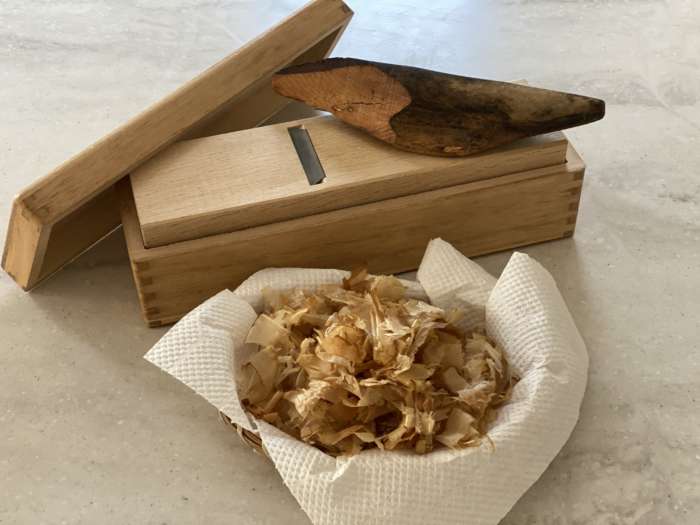
To make katsuobushi, the bonito is simmered and its bones are removed after which it is dried and smoked. Sometimes a mold that promotes fermentation is added to the bonito, other fish are processed in a similar fashion.
It is commonly used for dashi (Japanese soup stock), but it is also sometimes placed on top of okonomiyaki or ohitashi to be tasted with the dish.
After being roasted in vacuo and seasoned with soy sauce or other seasonings, it is called “okaka”, and is sometimes mixed with rice balls or rice to make yaki onigiri (grilled rice balls).
There are two major types of Katsuobushi:
Arabushi (荒節) : Light in flavor, this dried and smoked katsuobushi is the most popular type, especially in the Kyoto and Osaka region.
Karebushi (枯節) : A mold that promotes fermentation and imparts a stronger umami flavor is added to arabushi, resulting in this type of Katsuobushi, popular in the Tokyo region.
Different ways to shave fish flakes:
Atsu kezuri (厚削り) : Thick-cut shavings that make an intense dash, used in dishes that are simmered for a long time.
Hanakatsuo (花かつお) : Thinly shaved flakes used for making dash quickly
Hana kezuri (花削り) : Very thin shavings also used to make instant dashi
Ito kezuri (糸削り) : Thin strands often used as a garnish for tofu or vegetables
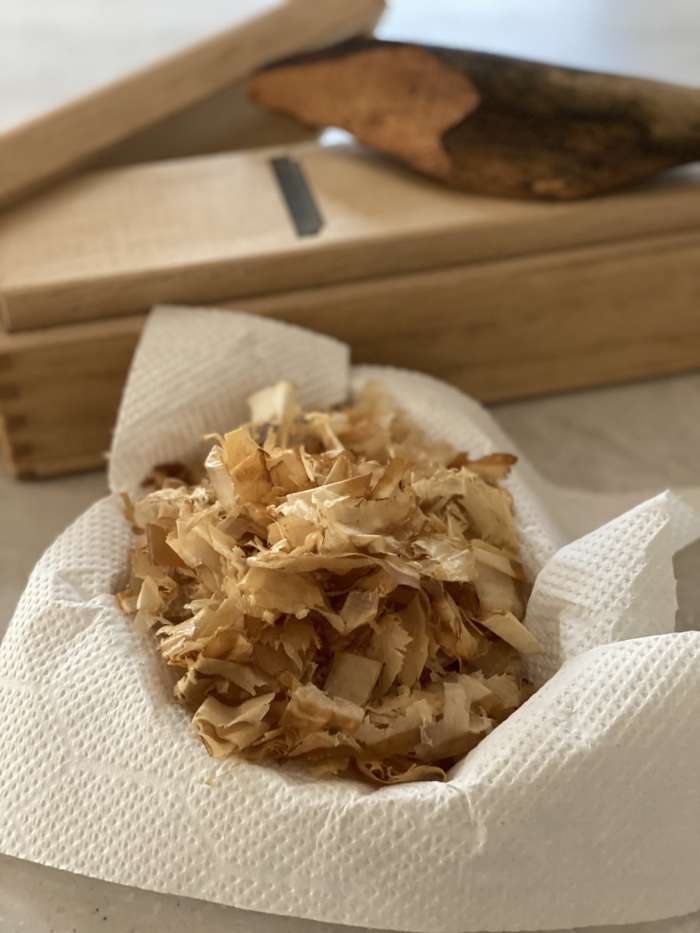
Recipes to use:
– Dashi (Japanese Soup Stock)
– Okaka onigiri
– Bonito Flakes & Cheese Onigiri
and more!
Shop at YJC’s store on Amazon:
Bonito Flakes (Katsuobushi)
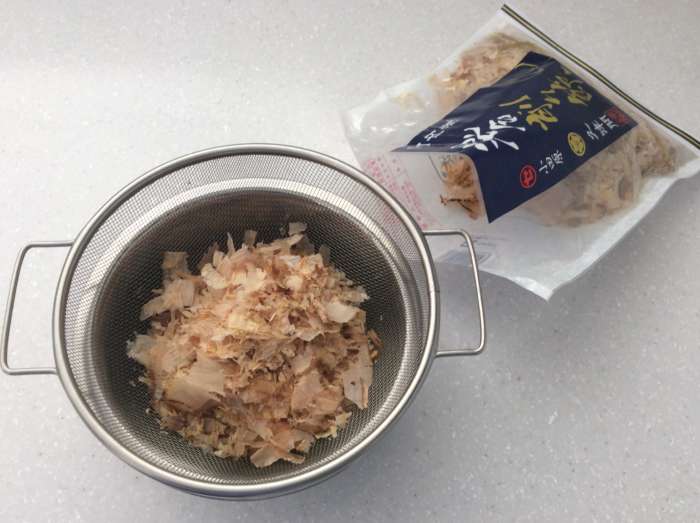
* Reference of this article : Food Sake Tokyo (The Terroir Guides)
Kelp (Kombu)
Kelp (Kombu 昆布) is the king of sea vegetables. It is an essential component in Dashi, the broth used in many Japanese dishes. A natural source for glutamic acid, it is rich in umami. Kombu thrives in the cool, mineral-rich waters surrounding Hokkaido, Japan’s northernmost island.
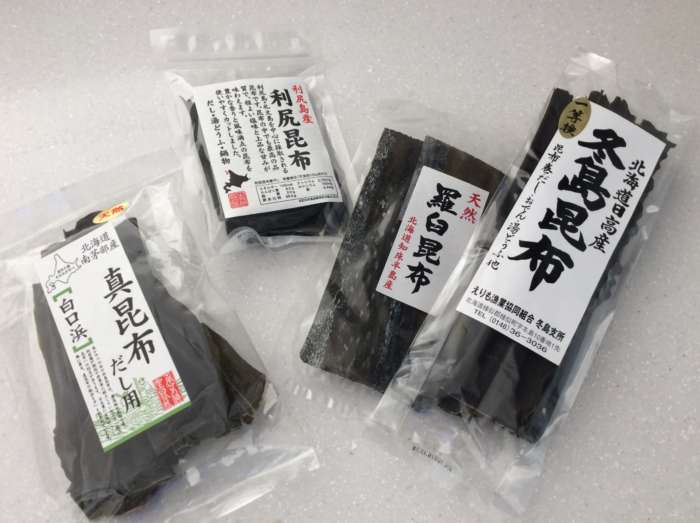
The cold, mineral-rich waters surrounding Hokkaido provide 99.5% of the country’s kombu. Most kombu is sold in long strips. But it is also available in shavings (tor0ro or boor) to add to soup or sprinkle over the rice. Kombu can also be wrapped around was fish in a process called kobujime, which changes the fish’s texture and adds umami.
There are more than forty types of child and farmed kombu. The name of a specific variety of kombu often reflects where it was harvested.
These are the five most popular:
Rishiri kombu (利尻昆布) : Harvested near Rishiri Island, this is an aromatic kombu that makes a clear broth, popular with chefs in Kyoto. It is considered a high-quality kombu and is often used in top restaurants.
Rausu Kombu (羅臼昆布) : This thick kombu has a stickiness to it, and a deep. Rich flavor that is slightly sweet. Also a high-quality kombu, it is the kombu that is used to make other shaved kombu products such as tororo and oboro.
Ma Kombu (真昆布) : Thick and rich in umami, slightly sweet, with an elegant flavor, this is also considered a top kombu.
Hidaka Kombu (日高昆布) : From the Hidaka region, this kombu is a popular variety used by busy home cooks because it quickly imparts its flavor when simmered in water. It is also reasonably priced and can be used as an ingredients for fish cake stew (oden), sea vegetables and seafood simmered in soy (Tsukudani) and other kombu dishes.
Naga Komnbu (長昆布) : A very long kombu (more than ten meters long), naga kombu is also used in dishes such as oden and Tsukudani. It is found only in the wild – not farmed- and is reasonably priced.
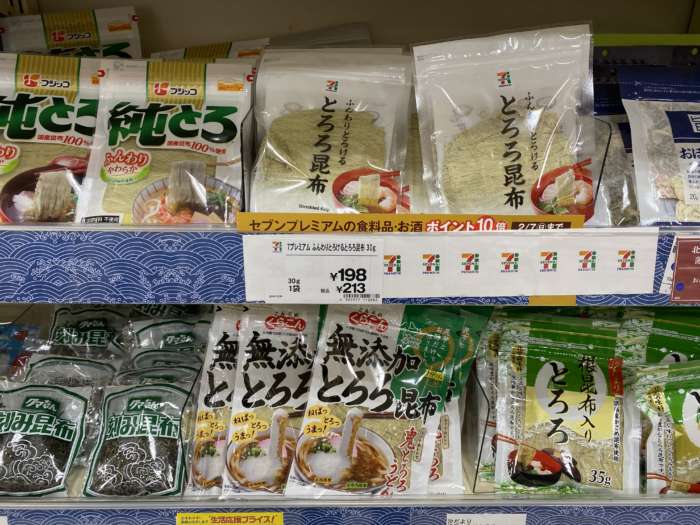
Some Kombu products (not the Kombu used in dashi) include:
Komochi Kombu : Kombu layered with herring eggs.
Kombu cha : Kombu that has been dried and crushed into a powder; most often used for tea, soup stocks, or for thickening non-oil salad dressings.
Musubi Kombu : Knots of Kombu, often found in fish cake stew. (Oden)
Oboro : Shaved Kombu, used for soups
Tororo : Shaved Kombu, used in soups and wrapped around rice and other items.
Shop at YJC’s store on Amazon:
Kelp (Kombu)
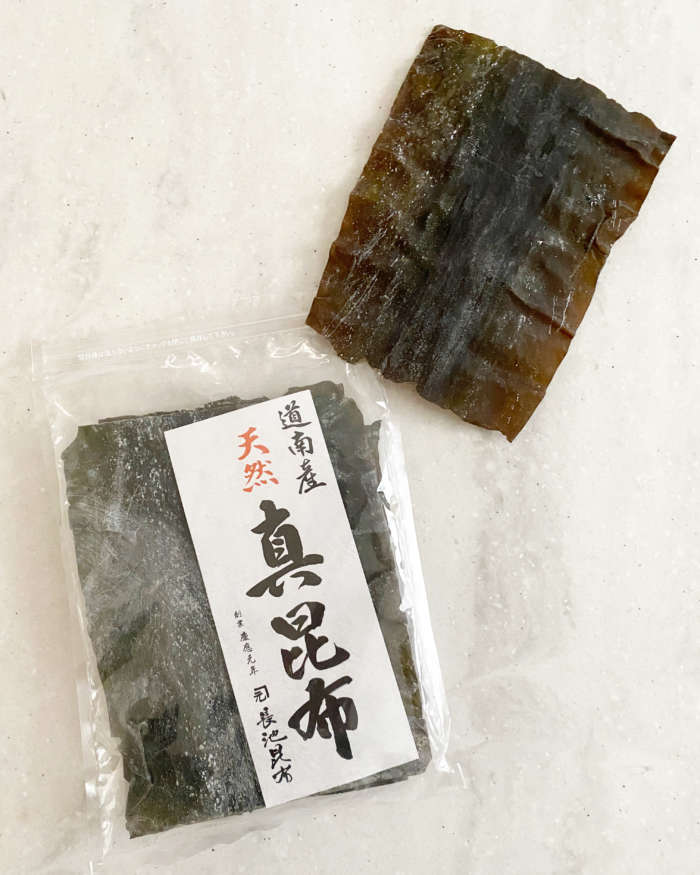
* Reference of this article : Food Sake Tokyo (The Terroir Guides)
Fu (Wheat Gluten) 麩
Fu (麸) is a processed food made mainly from gluten. Gluten is produced by kneading wheat flour with water. Since there is still some starch left after just kneading the flour, it is put in a cloth bag and rubbed in water, and the gluten left in the bag is used for fu.
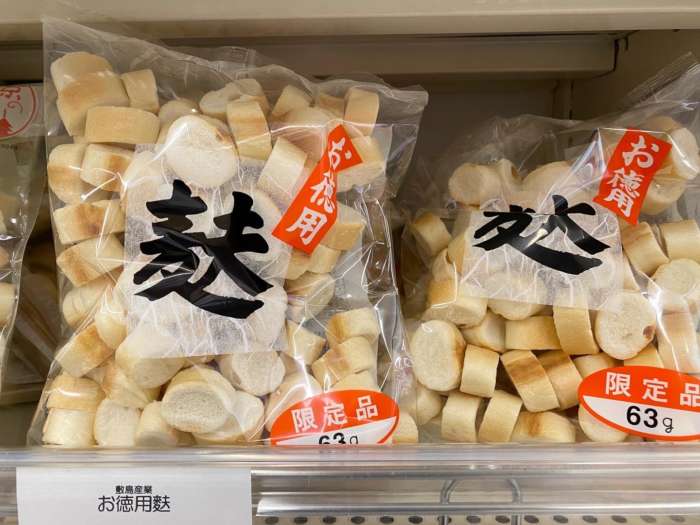
History of fu:
It is said that the production method of fu was introduced by Zen monks who came from Ming Dynasty China in the early Muromachi Period (1336-1573). Fu, along with tofu, was an ingredient to supplement protein, which was often lacking in vegetarian cuisine at that time.
In those days, the number of domestic wheat crops was small and wheat was expensive, so fu was a food for special occasions at court and temples. For this reason, the culture of fu developed in Kyoto, where temples and shrines and the Imperial Palace are located.
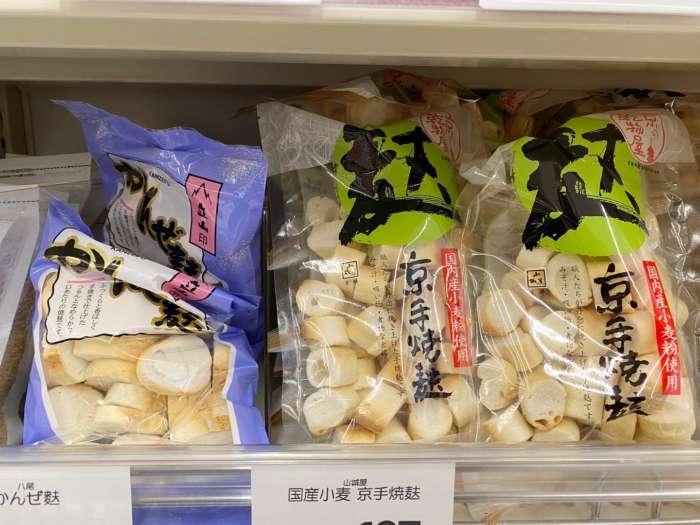
In the Momoyama period (1573-1600), a confection called “Funoyaki” appeared in documents. It is written in the “Chakai-ki” that “Funoyaki” often appeared as a rare sweet at the “Tensho Tea Ceremony 100 Seats” held by Hideyoshi Toyotomi and Sen no Rikyu, and that Rikyu was fond of it. Even today, “funoyaki” is used as a tea confectionery, rolled up like a crepe or shaped like a rusk.
Read More
Kiriboshi Daikon (Dried Daikon Radish) 切り干し大根
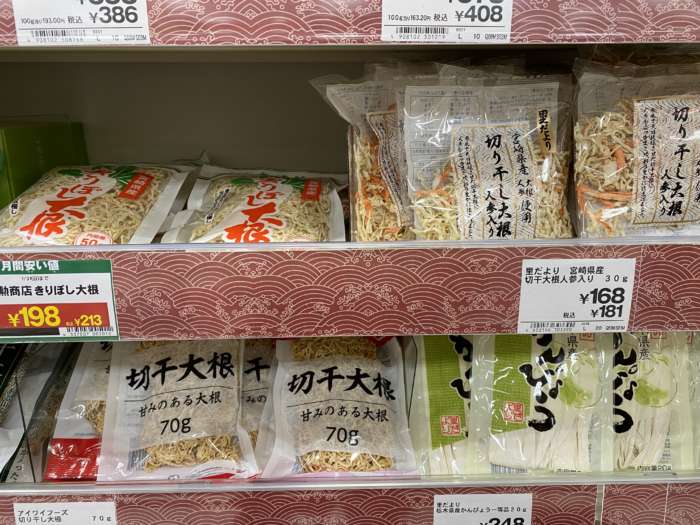
Dried daikon radish stripes are rich in Calcium, Vitamin C, D and Iron. It is sun-dried to increase its natural sweetness and flavor and suitable for Macrobiotic, Vegan, Raw, Kosher, Gluten-Free dishes. In spring and summer, simply soak to enjoy raw in salads. And in fall and winter, add dried daikon to sauteed vegetables or soups for good flavor and nutrition. Also rich in dietary fiber long-term intake of Dried Radish is good for digestion.
Recipes to use:
– Simmered Daikon Radish (Kiriboshi Daikon No Nimono)
– Salad with Mizuna, daikon radish and fried tofu
Shop:
– Japanese Cooking Pantry
Miso (味噌)
Miso (味噌) is a fermented paste, which is made from soybeans and sea salt combined with koji (麹, a type of mold starter). The koji in miso can be made from any grains like brown or white rice, barley or soy beans. 80% of miso sold is kome-koji(米麹, rice koji) based.
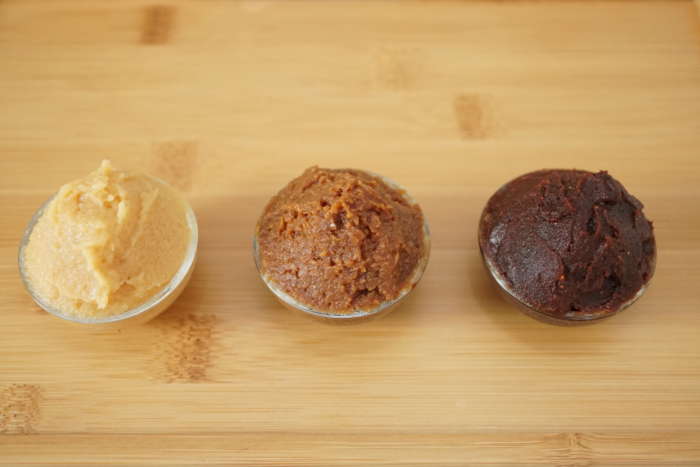
Miso is one of the key ingredients in Japanese cuisine. Personally, I like miso because miso is a versatile seasoning and also a fermented food. I make my own miso every year at home. Once it sets, the fermentation starts and can take from 3 months to 3 years! I usually wait for 8 months. The longer the fermentation process, the darker and the more intense the flavor of miso becomes.
There are mainly 9 types of Miso in Japan. To make it easy and simple, I introduce three colors and three base ingredients of Miso.
Miso by Three Colors
1. White Miso (Shiro Miso 白味噌)
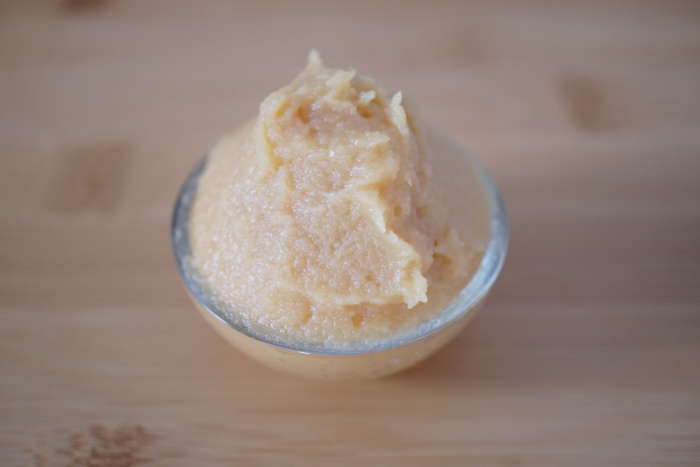
Shiro Miso is light yellow, smooth paste made from soybeans and rice koji. It generally tastes mild and light in flavor and contains the most carbohydrates of all miso and therefore it tastes the sweetest.
Sample ratio:
40% – soybean
60% – rice or barley
2. Yellow/Brown Miso (Awase Miso 合わせ味噌)
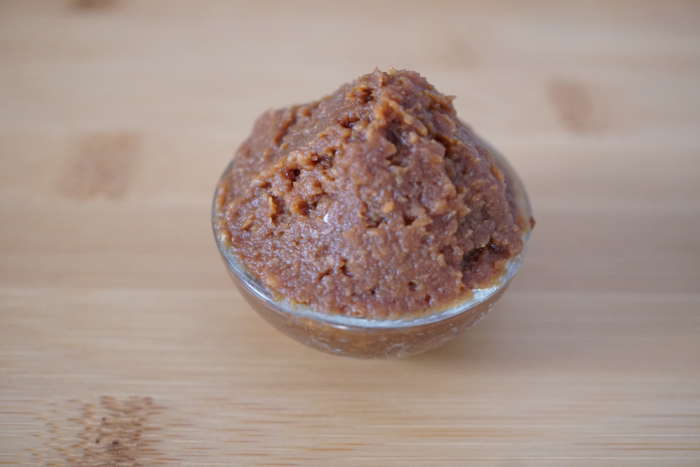
It is a combination of Red Miso and White Miso. This is the traditional miso to make miso soup everyday at home.
3. Dark Brown/Red Miso (Aka Miso 赤味噌)
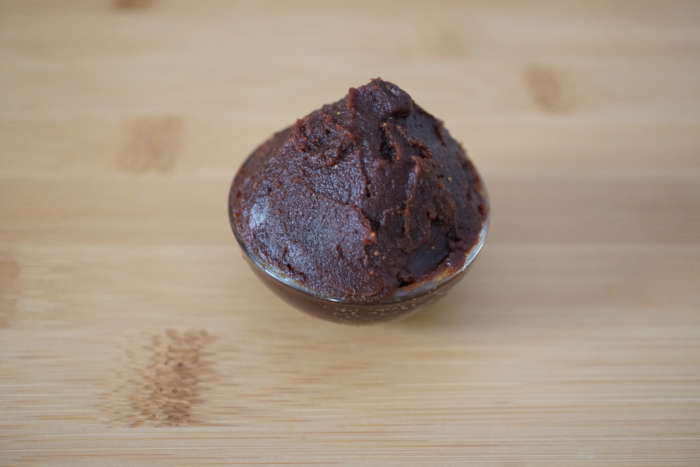
The longer fermentation period (around 1 to 3 years) of White Miso produces Red Miso. It gets darker color and deep aromatic flavor and salty miso. Red Miso contains the highest levels of protein of all types of miso.
Sample ratio:
70% – soybean
30% – rice or barley
Miso by Three Base Ingredients
1. Rice Miso (Kome Miso 米味噌) : Miso made from soybeans, salt, and rice koji (米麹)
2. Barley Miso (Mugi Miso 麦味噌) : Miso made from soybeans, salt, and barley koji (麦麹). It has a very dark color and quite salty but very rich taste. In addition, it has grainy and malty in taste. Fermentation period is one to three years. Barley miso is the most common in Kyushu region, southern parts of Japan.
3. Soybean Miso (Mame Miso 豆味噌): Miso made from soybeans, salt, and the koji produced from soybeans (豆麹).
Special Miso by Region:
Sendai Miso (仙台みそ) – Miso from the Sendai area. Often called red miso.
Haccho Miso (八丁みそ) – Miso from Aichi prefecture. It has a distinctive soybean flavor but surprisingly less salty. Dark brown color and its fermentation period is at least 3 years.
Shinshu Miso (信州みそ) – Miso from Nagano prefecture. Rice-based miso.
Saikyo Miso (西京みそ) – Miso from Kyoto. Rice-based miso and typically on the sweeter side.
Kinzanji Miso (金山寺みそ) – Miso from Kyoto. It contains fermented grains and vegetables. Often slightly sweet and used as a condiment for vegetables.
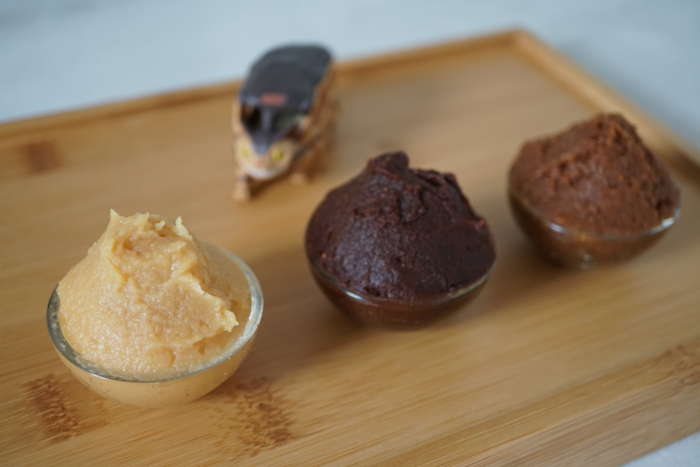
Substitution:
There is no appropriate substitute for miso. However, vegimite or marmite would be the similar.
Storage:
Miso should be kept in the fridge to stop the fermentation process and preserve its freshness.
Miso doesn’t freeze so you can also store it in the freezer and use whenever you need right away.
You can keep the miso up to one year once after open the package.
Miso Recipes:
– Miso soup with tofu and wakame
– Veggie Miso Soup
– Grilled Salmon with Walnut and Miso
– Miso dengaku with konnyaku
– Tonjiru
– Nasu Dengaku
– Mackerel simmered in miso
– Daikon Dengaku Miso
and more…!
Memo :
1. Are you looking for Japanese kitchenwares and cooking tools etc? Visit YJC store on Amazon!
2. Would you like to cook many more recipes? Download Free recipe app from here! “Recipe by YJC”
Sea vegetables for Japanese Cooking

Sea vegetables, a name for aquatic vegetarian more accurate than that oft-used “seaweed” have a prominent place on the Japanese table and are valued for being rich in minerals and low in calories. Kaiso (海藻) is the generic term for sea vegetables; well-known sea vegetables found frequently on the Japanese table include Kelp (kombu 昆布), Laver (Nori 海苔), sea tangle (wakame わかめ), and hijiki (no English name). Wakame is often used in miso soups or on salads; Hijiki is often simmered in soy sauce and broth (dashi). Red algae (tengusa) is another major sea vegetables. It won’t be found on the dinner plate, but it is widely consumed – it’s the major components of agar agar (kanten), a low-calorie gelatin.
Kelp:
Kelp (Kombu 昆布) is the king of sea vegetables. It is an essential component in Dashi, the broth used in many Japanese dishes. A natural source for glutamic acid, it is rich in umami. Kombu thrives in the cool, mineral-rich waters surrounding Hokkaido, Japan’s northernmost island.
Some Kombu products (not the Kombu used in dashi) include:
Komochi Kombu : Kombu layered with herring eggs.
Kombu cha : Kombu that has been dried and crushed into a powder; most often used for tea, soup stocks, or for thickening non-oil salad dressings.
Musubi Kombu : Knots of Kombu, often found in fish cake stew. (Oden)
Oboro : Shaved Kombu, used for soups Tororo : Shaved Kombu, used in soups and wrapped around rice and other items.

Laver:
Laver (Nori 海苔) is toasted and most often found surrounding roll sushi. 80% of Japan’s nori is harvested in the Ariake Bay and Seto Naikai in southern Japan. Before eating, nori may be warmed slightly over low heat to bring out its aroma.
Some nori products include:
Aonori: Green laver that has been dried and flaked; used as a topping on food such as okonomiyaki, Japanese savory pancake.
Aosa: Green laver similar to aonori.
Ajitsuke nori: Laver seasoned with soy sauce and mirin; popular at breakfast.
Mominori: Shredded bits of ajitsuke nori; often used as a garnish over noodles.
Yaki nori: Toasted nori, used for rolled sushi
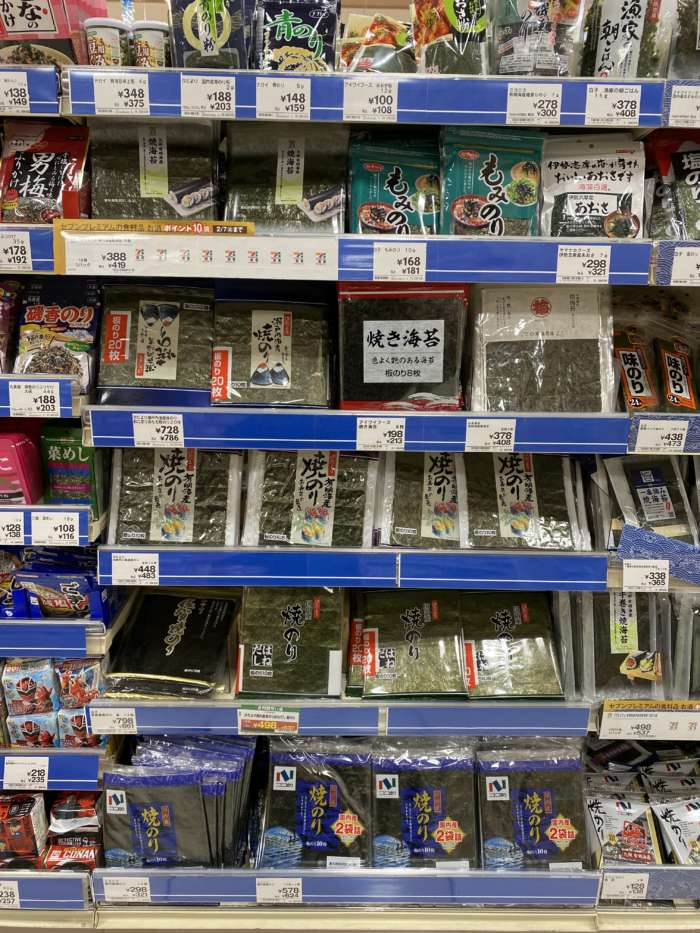
Memo :
1. Are you looking for Japanese cookbooks and kitchenwares etc? Visit YJC store on Amazon!
2. Would you like to cook many more recipes? Download Free recipe app from here! “Recipe by YJC”
* Reference of this article : Food Sake Tokyo (The Terroir Guides)
Soy Products for Japanese Cooking
The soy bean, a rich source of protein, is central to the Japanese diet. Soy products include tofu, soy sauce, and miso. Tofu can also be pronounced dofu, as in Koya-dofu (freeze-dried tofu) or yudofu (tofu hot pot).
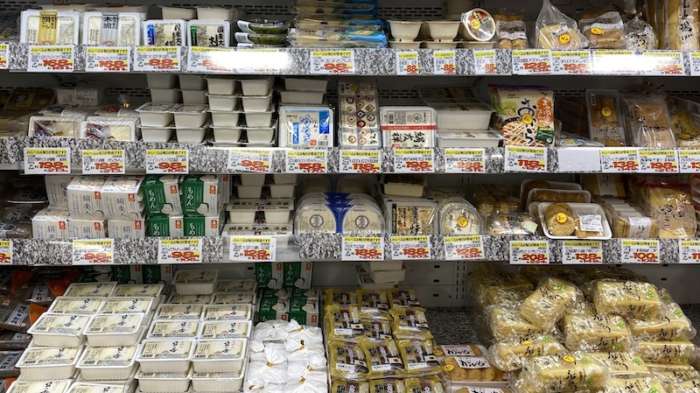
Tofu
Tofu in Japan can be a reservation, a far cry from the bland blocks commonly found commonly found elsewhere.
Abura-age (油揚げ) : Pieces of tofu from which excess water has been pressed, and then deep-fried
Agedashi dofu (揚げ出し豆腐) : Tofu that is rolled in a starch (katakuriko0 deep-fried, and covered in a savory soy and dashi sauce
Atsu-age (厚揚げ) : Thick pieces of tofu that are deep-fried
Ganmodoki (がんもどき) : Tofu that is mixed with vegetables from both land and sea, molded into balls, and deep-fried
Hiyayakko (冷奴) : Chilled tofu, popular in summer
Kinugoshi dofu (絹ごし豆腐) : Soft or silken tofu
Koya-dofu (高野豆腐) : Freeze-dried tofu, named after Mount Koya where it was originally made
Momen dofu (木綿豆腐) : cotton tofu or firm tofu, so called because the tofu was traditionally strained through a piece of cotton cloth
Yakidofu (焼き豆腐) : Grilled tofu, often used in hot pots
Yudofu (湯豆腐) : Tofu hot pot, a popular dish in the winter
Zaru dofu (ざる豆腐) : Very soft tofu named for the zaru, a bowl made from bamboo in which it is formed
Other soy products
Daizu (大豆) : Dried soybeans
Edamame (枝豆) : fresh soybeans, usually served boiled and seasoned with sea salt
Kinako (きなこ) : Flour made from toasted soybeans; a popular ingredients in wagashi (Japanese confections)
Miso (みそ) : Fermented paste, which is made from soybeans and sea salt combined with koji. More in detail
Okara (おから) : The pulp left over after steamed soy beans are pressed to make soymilk; low in fat and rich in fiber, okra may be mixed with vegetables, or used as an ingredient in croquette
Natto (納豆) : Fermented soybeans, famous for a their funky aroma and gooey texture.
Tonyu (豆乳) : Soy milk
Yuba (湯葉) : The skin from soy milk that has been heated; best when served on its own with a bit of soy sauce and wasabi, it can also be used to wrap foods or as an ingredient.
* Reference of this article : Food Sake Tokyo (The Terroir Guides)
Dried products for Japanese Cooking
Kanbutsu (dried products, 乾物) are key staples of Japanese pantry. All have a long shelf life, most are natural and without preservatives; and they can be simply reconstituted in water before use.
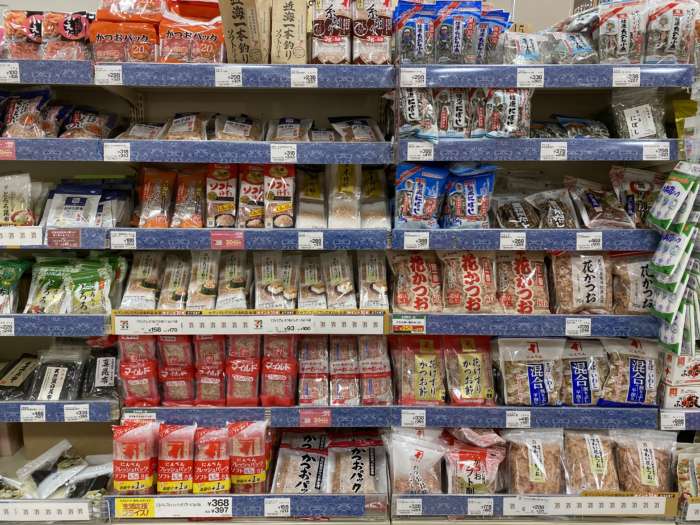
Seaweed:
Aonori (青のり): Green laver, often sprinkled on Okonomiyaki and Yakisoba.
Aosa (あおさ): Sea lettuce, good in soups
Hijiki (ひじき): A black sea vegetable rich in minerals and protein
Kaiso (海藻): Generic term for sea vegetables, often added to salads
Kanten (寒天): Aga-agar made from tengusa, a sea vegetabl, and used as a gelatin
Kombu (昆布): Kelp, essential ingredients in dashi soup broth
Nori (海苔/のり): Seaweed, often used for sushi
Wakame (わかめ): A sea vegetable often used in miso soup and salads
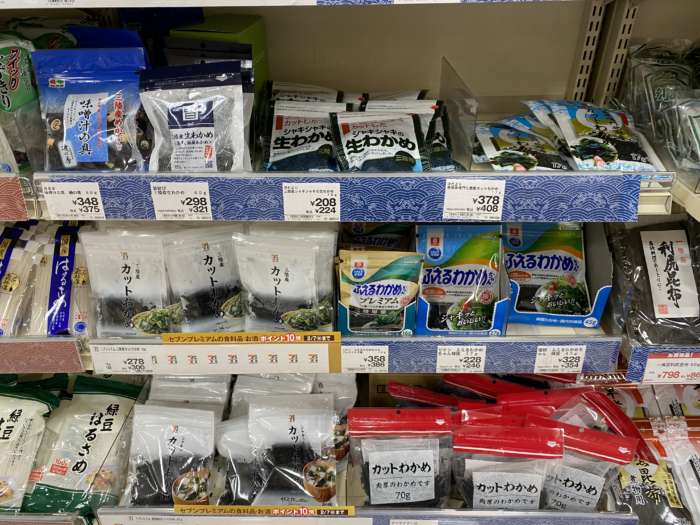
Seafood:
Katsuobushi (かつおぶし): Dried bonito flakes
Niboshi (煮干し): Small dried sardines
Sakura ebi (桜えび): Dried sakura shrimp
Sesame seeds:
Goma (ごま): Sesame seeds
Irigoma (炒りごま): Roasted sesame seeds
Kurogoma (黒ごま): Black sesame seeds
Shirogoma (白ごま): White sesame seeds
Surigoma (すりごま): Crushed sesame seeds
Wheat gluten:
Fu (麩): Wheat gluten
Kuruma-fu(車麩): Car wheel shape wheat gluten
Vegetable:
Hoshi shiitake (干し椎茸): Dried shiitake mushrooms
Hoshi warabi (干しわらび): Dried bracken, a type of mountain vegetable (Sansai)
Hoshi zenmai (干しぜんまい): Dried royal fern, a type of mountain vegetable (Sansai)
Kanpyo (かんぴょう): Dried gourd strips
Kikurage (きくらげ): Dried wood-ear mushroom
Kinako (きなこ): Dried soybean powder, a popular ingredient in confections
Kiriboshi daikon (切り干し大根): Dried strips of daikon
Kuzuko (葛粉): Starch made from the kudzu plant, used as a thickening agent, also referred to simply as Kuzu
Beans:
Mame (豆): Generic term for beans
Azuki (小豆): Small red beans, often used in confections (wagashi)
Daizu (大豆): Soybeans
Kintoki (金時): Kidney beans
Kuromame (黒豆): Black beans
Koya dofu (高野豆腐): Freeze-dried tofu
Noodles:
Menrui (麺類): Generic term for noodles
Soba (そば): Buckwheat flour noodles
Somen (そうめん): Thin wheat noodles
Udon (うどん): Thicker wheat noodles
Harusame (はるさめ): Thin noodles made from bean starch (or potato starch)
Memo :
1. Are you looking for Japanese cookbooks and kitchenwares etc? Visit YJC store on Amazon!
2. Would you like to cook many more recipes? Download Free recipe app from here! “Recipe by YJC”
* Reference of this article : Food Sake Tokyo (The Terroir Guides)





























